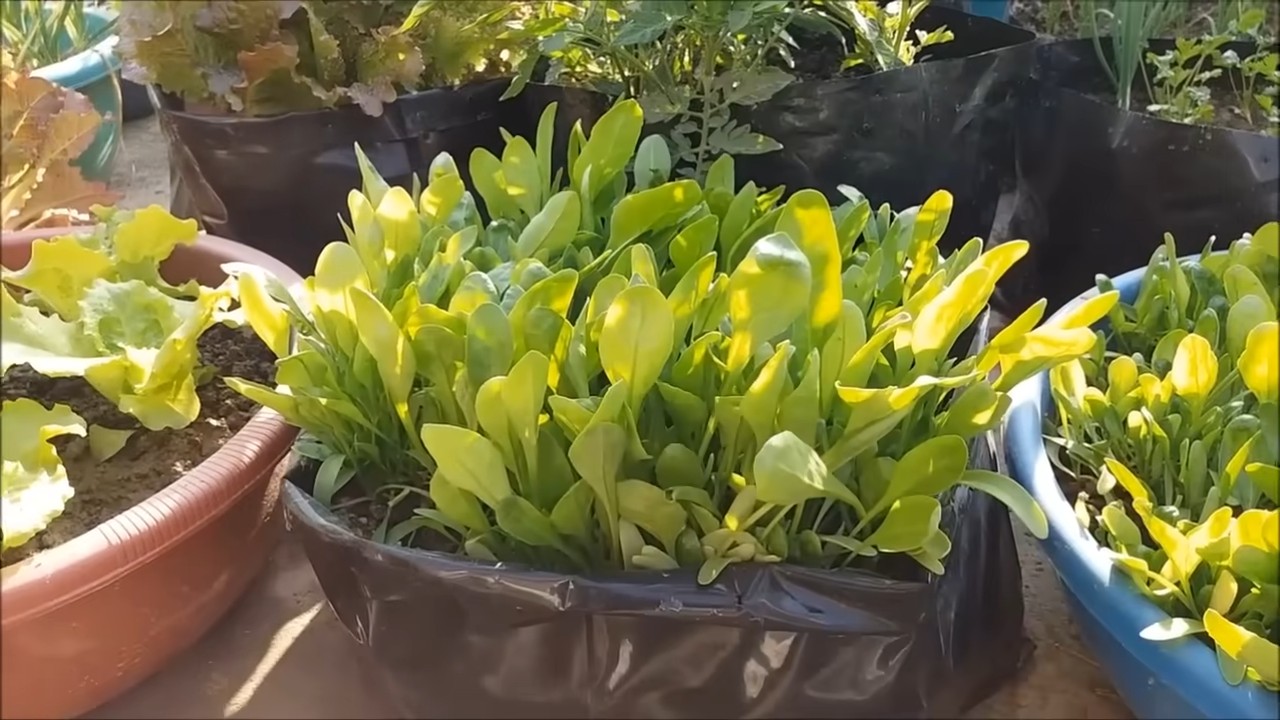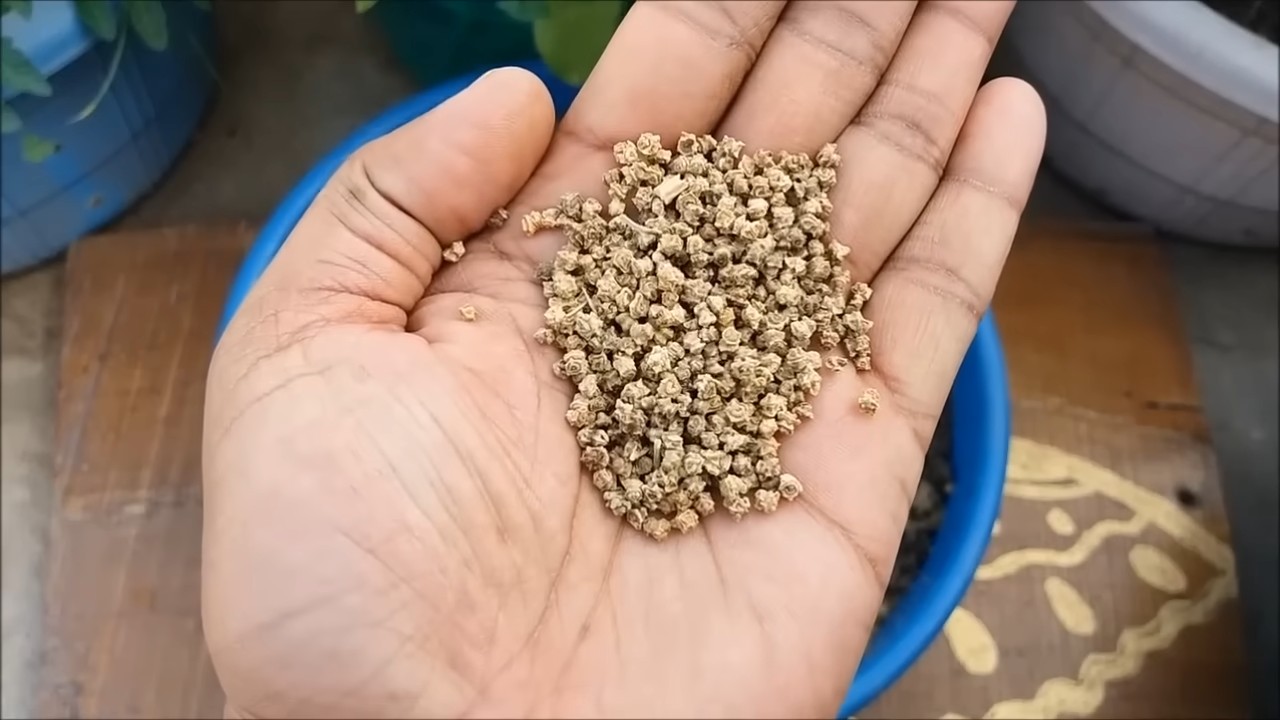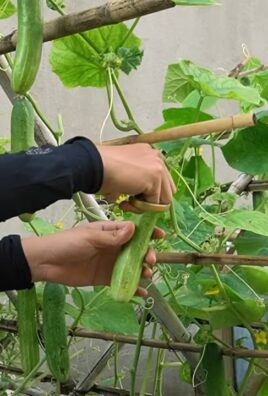Growing Spinach at Home can seem daunting, but trust me, it’s more achievable than you think! Have you ever dreamt of stepping into your backyard and harvesting fresh, vibrant spinach for a delicious salad or smoothie? I know I have! For centuries, spinach has been a nutritional powerhouse, cultivated from ancient Persia to our modern gardens. It’s not just a leafy green; it’s a symbol of health and vitality, deeply rooted in culinary traditions worldwide.
But let’s be honest, store-bought spinach can sometimes be a letdown – wilted, expensive, and lacking that fresh, earthy flavor. That’s where the magic of DIY comes in! This article is your ultimate guide to unlocking the secrets of growing spinach at home, even if you have limited space or gardening experience. I’m going to share simple, effective tricks and hacks that will transform your thumb from brown to green (or should I say, spinach-green?).
Imagine the satisfaction of knowing exactly where your food comes from, free from harmful pesticides and bursting with flavor. Plus, growing your own spinach is incredibly rewarding and a fantastic way to connect with nature. So, grab your gardening gloves, and let’s embark on this exciting journey together. You’ll be amazed at how easy and fulfilling it is to cultivate your own thriving spinach patch!

Growing Spinach at Home: A Beginner’s Guide
Hey there, fellow garden enthusiasts! I’m so excited to share my experience with growing spinach at home. It’s surprisingly easy, and nothing beats the taste of fresh, homegrown spinach in your salads, smoothies, or cooked dishes. This guide will walk you through everything you need to know, from choosing the right variety to harvesting your leafy greens. Let’s get started!
Choosing the Right Spinach Variety
First things first, let’s talk about spinach varieties. Not all spinach is created equal! Some are better suited for certain climates and growing conditions. Here are a few popular options:
* Savoy Spinach: This type has crinkled, curly leaves and a slightly stronger flavor. It’s a good choice for cooking and holds up well in colder weather.
* Smooth-Leaf Spinach: As the name suggests, this variety has smooth, flat leaves. It’s easier to clean and often preferred for salads.
* Semi-Savoy Spinach: A hybrid between Savoy and Smooth-Leaf, offering a balance of texture and flavor. It’s a versatile option for both cooking and fresh eating.
* Malabar Spinach: Technically not a true spinach, but a heat-tolerant alternative that thrives in warmer climates. It has thick, fleshy leaves and a slightly different flavor profile.
I personally love growing Savoy spinach for its robust flavor and texture in cooked dishes, but I also keep some Smooth-Leaf spinach on hand for salads. Consider your climate and culinary preferences when making your choice.
Preparing Your Spinach Bed
Spinach thrives in well-drained soil that’s rich in organic matter. Here’s how to prepare your garden bed:
* Sunlight: Spinach needs at least 3-6 hours of sunlight per day. Choose a location that receives morning sun and some afternoon shade, especially in warmer climates.
* Soil: Spinach prefers a slightly acidic to neutral soil pH (around 6.5 to 7.0). Amend your soil with compost, aged manure, or other organic matter to improve drainage and fertility.
* Testing the Soil: I highly recommend testing your soil’s pH before planting. You can purchase a soil testing kit at most garden centers or send a sample to your local agricultural extension office.
* Clearing the Area: Remove any weeds, rocks, or debris from the planting area.
* Tilling or Digging: Loosen the soil to a depth of at least 6-8 inches. This will allow the spinach roots to penetrate easily.
* Adding Amendments: Incorporate the compost or other organic matter into the soil. I usually add a generous layer, about 2-3 inches thick.
* Leveling the Surface: Rake the soil to create a smooth, even surface.
Planting Spinach Seeds
Spinach is a cool-season crop, meaning it grows best in cooler temperatures. Here’s how to plant your spinach seeds:
* Timing: Plant spinach in early spring or early fall. In most regions, you can plant a spring crop about 4-6 weeks before the last expected frost and a fall crop about 6-8 weeks before the first expected frost.
* Direct Sowing: Spinach is best direct-sown, meaning you plant the seeds directly into the garden bed. It doesn’t transplant well.
* Seed Depth: Sow the seeds about ½ inch deep and 1 inch apart.
* Row Spacing: Space the rows about 12-18 inches apart.
* Watering: Gently water the soil after planting. Keep the soil consistently moist until the seeds germinate.
* Germination: Spinach seeds typically germinate in 5-10 days, depending on the temperature and moisture levels.
Caring for Your Spinach Plants
Once your spinach seedlings emerge, it’s important to provide them with proper care to ensure a healthy and abundant harvest.
* Watering: Spinach needs consistent moisture, especially during hot weather. Water deeply and regularly, aiming for about 1 inch of water per week. Avoid overhead watering, as this can promote fungal diseases. I prefer using a soaker hose or drip irrigation to water my spinach plants.
* Thinning: Once the seedlings are a few inches tall, thin them to about 3-6 inches apart. This will give them enough space to grow and prevent overcrowding. You can eat the thinned seedlings as baby spinach!
* Weeding: Keep the garden bed free of weeds, as they can compete with the spinach plants for nutrients and water. Hand-pull weeds carefully to avoid disturbing the spinach roots.
* Fertilizing: Spinach is a heavy feeder, so it benefits from regular fertilization. Use a balanced organic fertilizer or side-dress with compost tea every few weeks.
* Pest Control: Spinach can be susceptible to certain pests, such as aphids, flea beetles, and leaf miners. Inspect your plants regularly and take action if you notice any signs of infestation. I prefer using organic pest control methods, such as insecticidal soap or neem oil.
* Bolting: Bolting is when spinach plants prematurely flower and produce seeds. This can happen when the weather gets too hot. To prevent bolting, choose heat-tolerant varieties, provide shade during the hottest part of the day, and harvest your spinach regularly.
Harvesting Your Spinach
Harvesting spinach is the most rewarding part of the process! Here’s how to do it:
* Timing: You can start harvesting spinach leaves when they are about 4-6 inches long.
* Method: Use a sharp knife or scissors to cut the leaves near the base of the plant. You can harvest the entire plant at once or harvest individual leaves as needed.
* Cut-and-Come-Again: Spinach is a “cut-and-come-again” crop, meaning you can harvest it multiple times. After harvesting, the plant will continue to produce new leaves.
* Storage: Store freshly harvested spinach in the refrigerator for up to a week. Wash and dry the leaves thoroughly before storing them in a plastic bag or container.
Troubleshooting Common Spinach Problems
Even with the best care, you might encounter some problems while growing spinach. Here are a few common issues and how to address them:
* Yellowing Leaves: This can be caused by nutrient deficiencies, overwatering, or underwatering. Check the soil moisture and fertility levels and adjust accordingly.
* Pest Infestations: As mentioned earlier, spinach can be susceptible to pests. Identify the pest and use appropriate organic pest control methods.
* Fungal Diseases: Fungal diseases can be caused by excessive moisture and poor air circulation. Avoid overhead watering and ensure good air flow around the plants.
* Bolting: As mentioned earlier, bolting can be caused by hot weather. Choose heat-tolerant varieties and provide shade during the hottest part of the day.
Extending Your Spinach Season
Want to enjoy fresh spinach for as long as possible? Here are a few tips for extending your spinach season:
* Succession Planting: Plant new spinach seeds every few weeks to ensure a continuous harvest.
* Cold Frames or Row Covers: Use cold frames or row covers to protect your spinach plants from frost and extend the growing season into the winter.
* Shade Cloth: Use shade cloth to protect your spinach plants from the intense summer heat and prevent bolting.
Enjoying Your Homegrown Spinach
Now that you’ve harvested your delicious homegrown spinach, it’s time to enjoy it! Here are a few ideas:
* Salads: Add fresh spinach to your salads for a boost of nutrients and flavor.
* Smoothies: Blend spinach into your smoothies for a healthy and delicious green drink.
* Sautéed Spinach: Sauté spinach with garlic and olive oil for a simple and flavorful side dish.
* Spinach Dip: Use your homegrown spinach to make a creamy and delicious spinach dip.
* Spinach Pie: Bake a savory spinach pie with feta cheese and phyllo dough.
Growing spinach at home is a rewarding experience that allows you to enjoy fresh, healthy greens all season long. With a little bit of planning and care, you can easily grow your own spinach and enjoy the many benefits it has to offer. Happy gardening!

Conclusion
So, there you have it! Growing spinach at home is not only achievable, even for those with limited space or gardening experience, but it’s also incredibly rewarding. Forget those limp, pre-packaged greens from the supermarket. Imagine stepping out to your balcony, patio, or even a sunny windowsill and harvesting fresh, vibrant spinach leaves bursting with flavor and nutrients.
This DIY approach to fresh produce offers a multitude of benefits. You control the growing environment, ensuring your spinach is free from harmful pesticides and herbicides. You reduce your carbon footprint by eliminating the transportation and packaging associated with store-bought spinach. And, perhaps most importantly, you gain a deep connection to the food you eat, fostering a greater appreciation for the natural world.
But the best part? The possibilities are endless! Experiment with different varieties of spinach, from the smooth-leaved Savoy to the crinkled-leafed Bloomsdale. Try succession planting, sowing seeds every few weeks, to ensure a continuous harvest throughout the growing season. Consider companion planting, pairing your spinach with other vegetables like radishes or lettuce, which can help deter pests and improve soil health. You can even add a touch of creativity by growing your spinach in decorative containers or vertical gardens, transforming your space into a lush, edible oasis.
Growing spinach at home is a gateway to a healthier, more sustainable lifestyle. It’s a simple yet profound way to connect with nature, nourish your body, and reduce your environmental impact. Don’t be intimidated by the prospect of gardening. Spinach is a relatively easy crop to grow, and with a little bit of care and attention, you’ll be enjoying fresh, homegrown spinach in no time.
We wholeheartedly encourage you to give this DIY trick a try. Start small, experiment with different techniques, and don’t be afraid to make mistakes. Gardening is a learning process, and every failure is an opportunity to grow (pun intended!).
And most importantly, we want to hear about your experience! Share your tips, tricks, and triumphs in the comments below. Let us know what varieties of spinach you’re growing, what challenges you’ve encountered, and what delicious recipes you’re creating with your homegrown harvest. Together, we can build a community of passionate home gardeners, sharing our knowledge and inspiring others to embrace the joys of growing their own food. So, grab your seeds, get your hands dirty, and embark on your own spinach-growing adventure today! You won’t regret it.
Frequently Asked Questions (FAQ)
What is the best time of year to start growing spinach at home?
Spinach is a cool-season crop, meaning it thrives in cooler temperatures. The best time to plant spinach is in early spring or late summer/early fall. For a spring crop, sow seeds as soon as the ground can be worked, typically 4-6 weeks before the last expected frost. For a fall crop, sow seeds 6-8 weeks before the first expected frost. In warmer climates, you can grow spinach throughout the winter. Avoid planting spinach during the hottest months of summer, as high temperatures can cause it to bolt (go to seed) prematurely, resulting in bitter-tasting leaves.
What kind of soil is best for growing spinach?
Spinach prefers well-drained soil that is rich in organic matter. The ideal soil pH is between 6.5 and 7.0. Before planting, amend your soil with compost or well-rotted manure to improve its fertility and drainage. If your soil is heavy clay, consider adding sand or perlite to improve drainage. You can also conduct a soil test to determine if your soil is lacking any essential nutrients.
How much sunlight does spinach need?
Spinach needs at least 4-6 hours of sunlight per day to thrive. However, in warmer climates, it can benefit from some afternoon shade to prevent bolting. If you’re growing spinach indoors, place it near a sunny window or use grow lights to provide adequate light.
How often should I water my spinach plants?
Spinach needs consistent moisture to grow well. Water your plants regularly, especially during dry periods. Aim to keep the soil consistently moist but not waterlogged. Overwatering can lead to root rot, so be sure to provide good drainage. A good rule of thumb is to water deeply when the top inch of soil feels dry to the touch.
What are some common pests and diseases that affect spinach?
Some common pests that can affect spinach include aphids, flea beetles, and leaf miners. You can control these pests by handpicking them off the plants, using insecticidal soap, or introducing beneficial insects like ladybugs. Common diseases that can affect spinach include downy mildew and white rust. To prevent these diseases, ensure good air circulation around your plants, avoid overhead watering, and choose disease-resistant varieties.
How do I harvest spinach?
You can harvest spinach leaves as soon as they are large enough to eat, typically when they are 4-6 inches long. To harvest, simply cut the outer leaves with a sharp knife or scissors, leaving the inner leaves to continue growing. You can also harvest the entire plant at once by cutting it off at the base. Regular harvesting encourages continued growth and prevents the plant from bolting.
Can I grow spinach in containers?
Yes, spinach grows well in containers. Choose a container that is at least 6 inches deep and has drainage holes. Use a high-quality potting mix and water regularly. Container-grown spinach may need to be fertilized more frequently than spinach grown in the ground.
How do I prevent spinach from bolting?
Bolting is when spinach plants prematurely go to seed, resulting in bitter-tasting leaves. To prevent bolting, plant spinach in early spring or late summer/early fall, provide adequate shade during hot weather, and water regularly. Choose bolt-resistant varieties of spinach.
What are some good companion plants for spinach?
Good companion plants for spinach include radishes, lettuce, onions, garlic, and marigolds. Radishes help to break up the soil and deter pests. Lettuce provides shade for spinach during hot weather. Onions and garlic repel pests. Marigolds attract beneficial insects.
How can I store harvested spinach?
To store harvested spinach, wash it thoroughly and pat it dry. Wrap the spinach in a paper towel and store it in a plastic bag in the refrigerator. Spinach can be stored for up to a week.




Leave a Comment